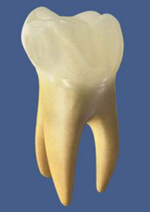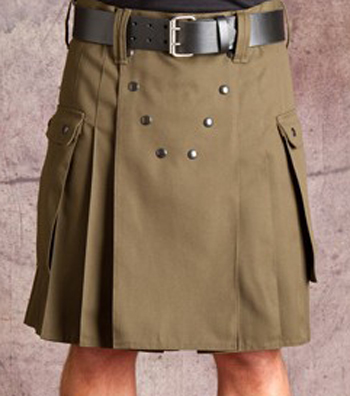furcat-, furca-
(Latin: fork, diverge, angle, split into two parts or branches)
2. To split or to separate into two parts or directions: As Jane was driving through the forest, the road she was driving on suddenly bifurcated and she noticed that if she were to go to the right, it would take her up the hill; however, if she were to turn to the left, she would be going down the hill

This particular illustration from Google images provides an example of bifurcating a symbol on a sign so it shows drivers on a highway that the road will be splitting into two directions.
2. A reference to something that is going into two branches or directions: Jan has some biforcated or Y-shaped styled flowers in her garden.
The number and locations of the bifurcations and ridge endings, known as minutiae, vary from finger to finger in any particular person, and from person to person for any particular finger; for example, the ring finger on the right hand.
When a set of finger images is obtained from someone, the number of minutiae is recorded for each finger. The precise locations of the minutiae are also recorded, in the form of numerical coordinates, for each finger.
The result is a function that can be entered and stored in a computer database which can rapidly compare this result with that of anyone else in the world whose finger image has been scanned.
2. An anatomical area of the body that has two branches or divisions that are forked: One example of such a bifurcation is when roots divide in a multi-rooted tooth.Other body parts that are bifurcations include the trachea, or the windpipe, which divides into the two bronchi or branches of the trachea that go into each of the two lungs.
2. Etymology: from Latin furca, "fork".
It is very difficult to clean where there is furcation because it is not easy to get into those areas.
It is a "bifurcation" when there are two lower parts of a tooth, or it is a "trifurcation" if there are three basic attachments as shown in the following image.
2. Etymology: from medical Latin furcatio, "a branching, a forking:; from Latin furcatus which came fromfucare, "to branch"; from Latin ferre "to bear".
The cartographers, or map makers, noticed that the large quadrifurcated river was flowing through the marshes on the edge of the lake.

This trifurcated example came from Google images.
If anyone wants to unbifurcate his or her garments, there are many styles from around the world as indicated in the following:
- Kilts, skirt-like garments, usually worn by men in the Scottish Highlands.
- Cassocks, long, robe-like clothing worn by members of the Catholic clergy.
- Fustanellas, short pleated skirts of white cloth worn by men in Greece and Albania.
- Hakamas, Japanese outer attire, worn by men and women, both of which have pleated, skirt-like appearances.
- Kimonos, loose, wide-sleeved robes, fastened at the waist with a wide sash, worn by men and women in Japan.
- Thobes, loose, long-sleeved, ankle-length wearing apparel for men, worn in Saudi Arabia, Kuwait, and other countries in that geographical area.
"Bifurcation" in the context of clothing refers to pants which separately covers each leg and so are referred to as "bifurcated clothing"; while clothing that covers both legs as an unseparated garment; such as, a skirt, is called unbifurcated clothing.
A movement known as MUG, or "Male Unbifurcated Garments" claims that unbifurcated clothing is more comfortable and more compatible with the male anatomy than pants are; and so, there should also be unbifurcated garments that are designed and intended specifically for men.
As some MUG believers say, "The unbifurcated clothing means that one's whole lower body goes into one big, breezy, comfortable space instead of the confinement that exists with the lack of breathing space reserved for legs in traditional men's lower-body garments; also known as, trousers or pants."
Those influenced by the MUG movement also believe that just as the highlanders of Scotland, the citizens of Ancient Rome and the city-states of old Greece, as well as the men of Indonesia, Polynesia, parts of Africa, and in other places; show that men have always worn and continue to wear more unbifurcated garments than "bifurcated" styles.
Several examples of unbifurcated clothing include, kilts, sarongs (a large sheet of fabric, often wrapped around the waist and worn as a skirt by men and women throughout much of south Asia and southeast Asia, parts of Africa, and on many Pacific islands), lavalavas (short for Samoan ʻie lavalava or "cloth that wraps around"), tunics, lungis (Bengali for a garment worn around the waist in India, Bangladesh, Sri Lanka, and Myanmar), kangas (Swahili for a colorful garment similar to kitenge or a sarong), togas, etc.
The links below will present significant amounts of information and many examples of unbifurcated clothing for your knowledge and pleasure!

